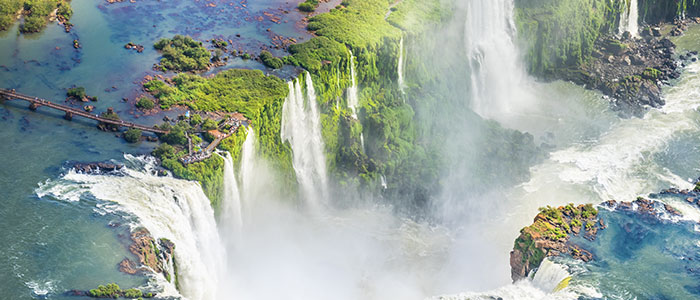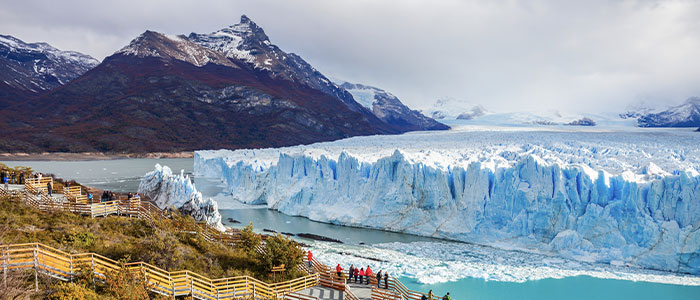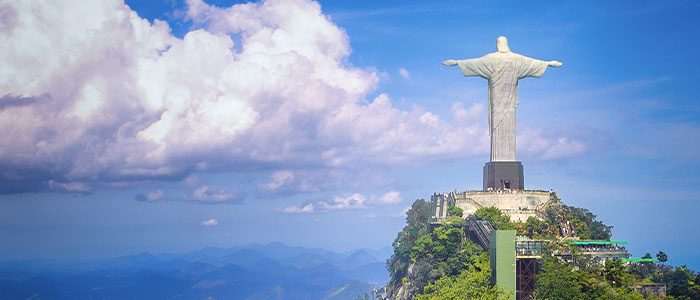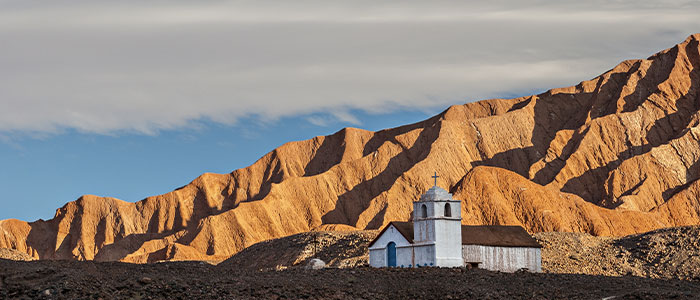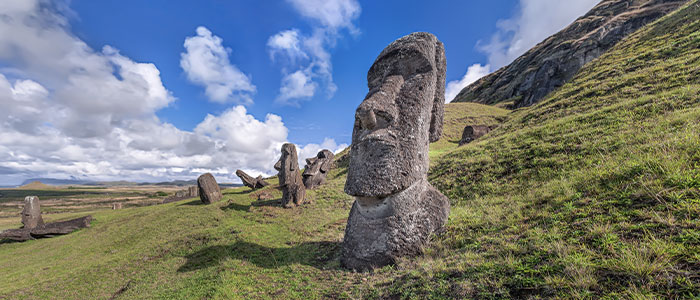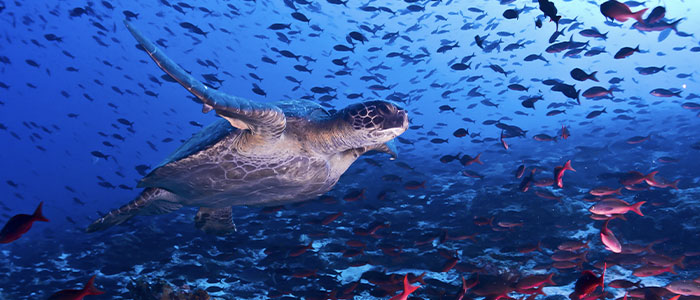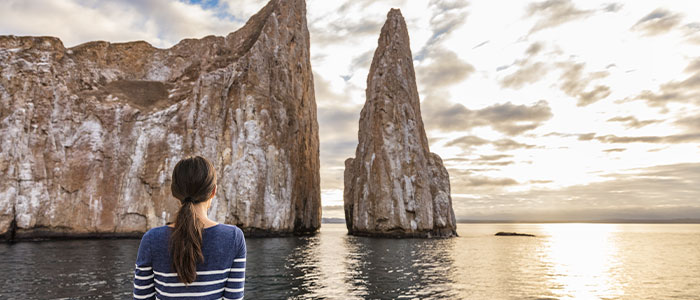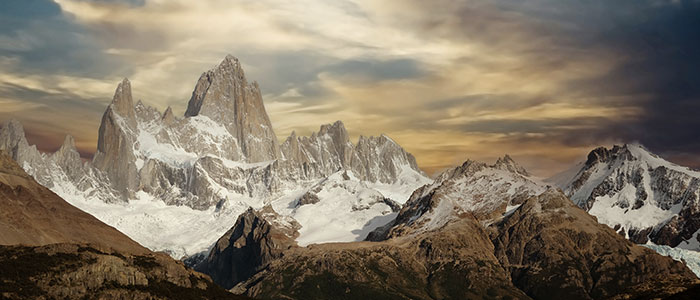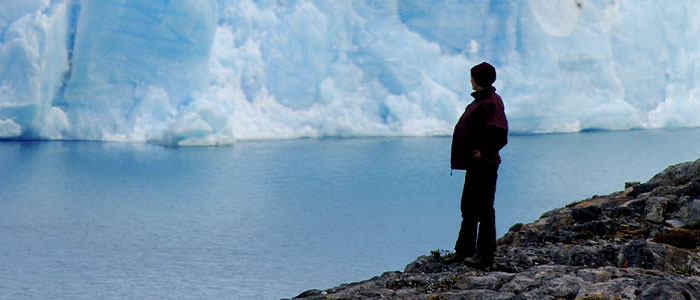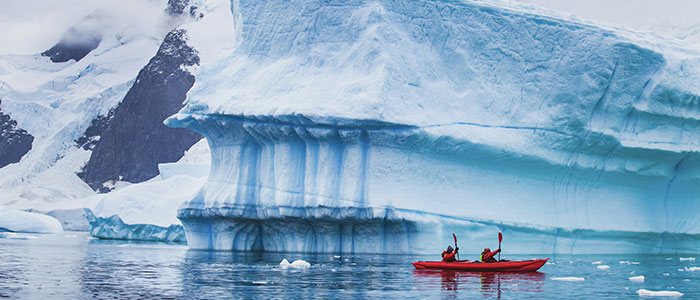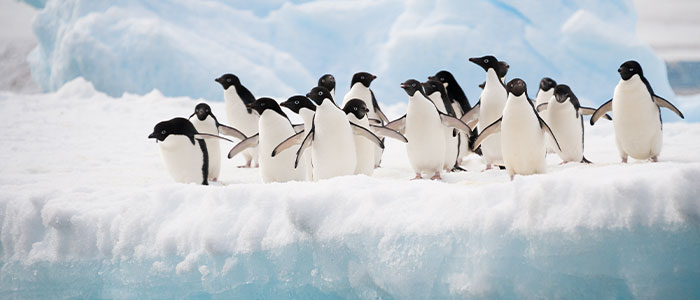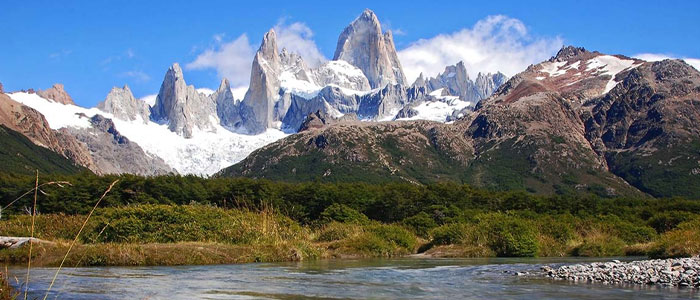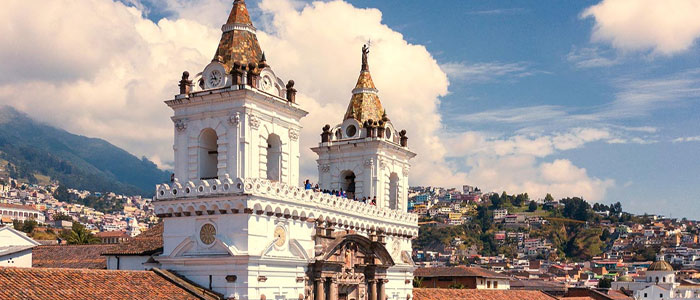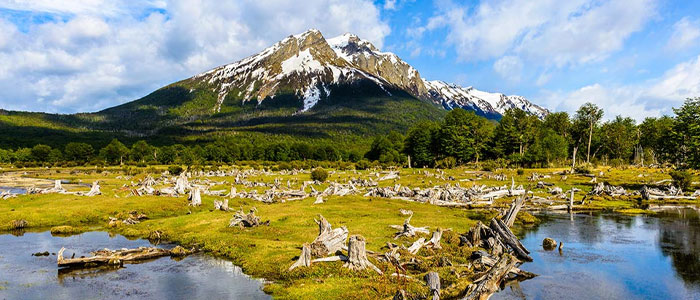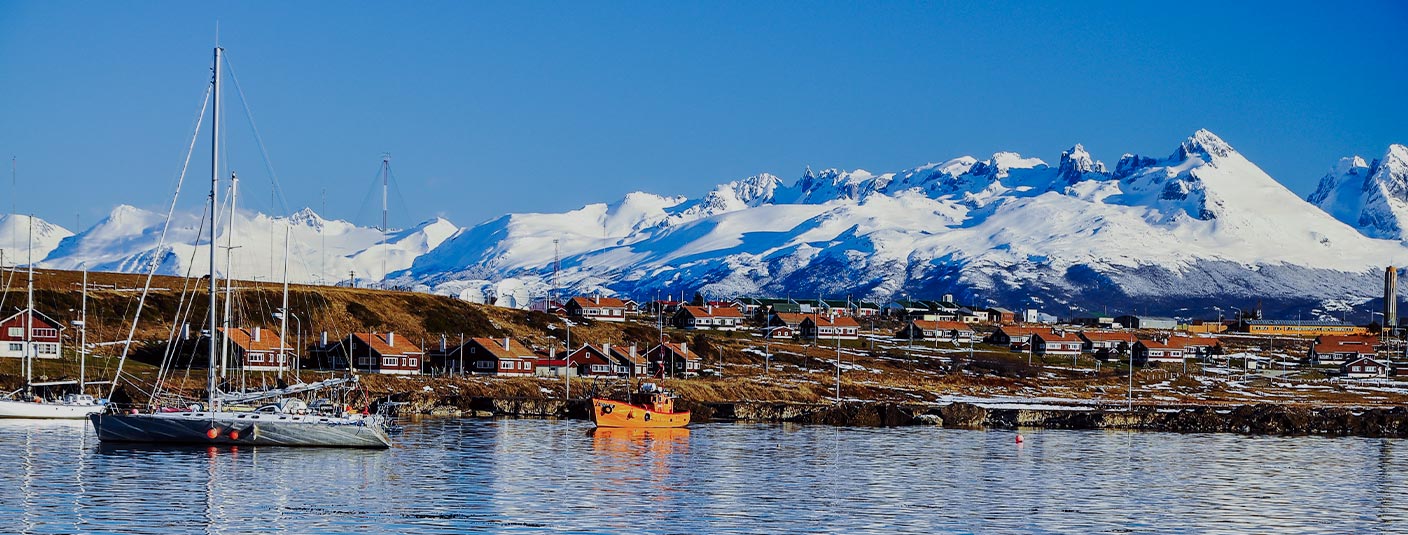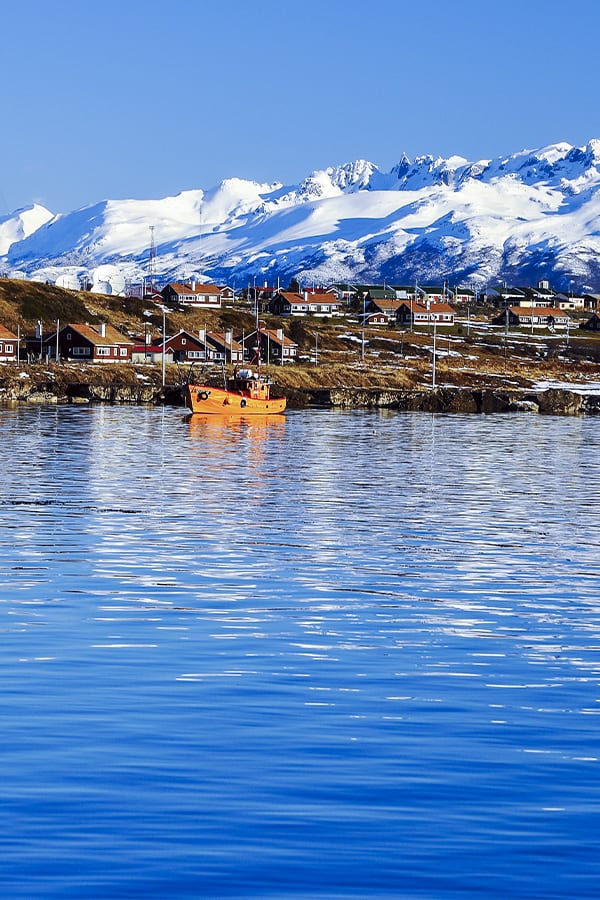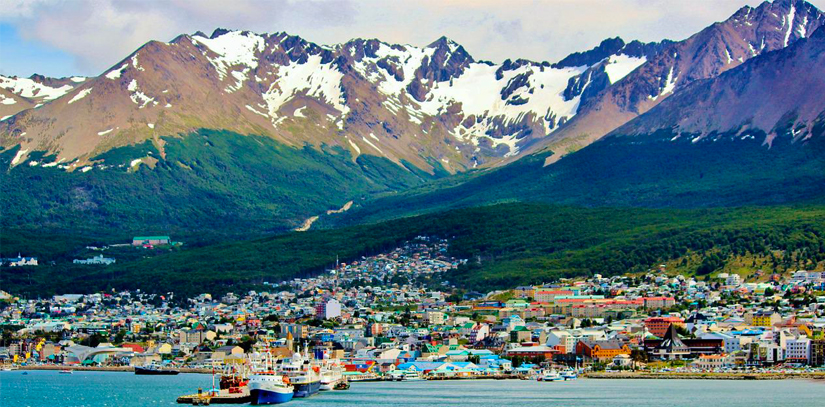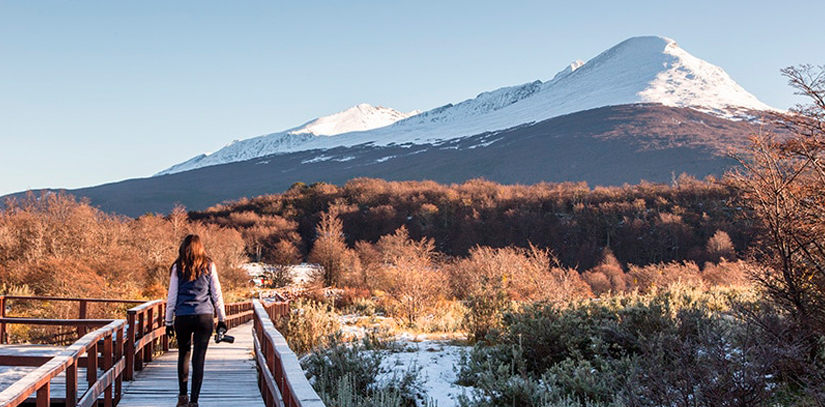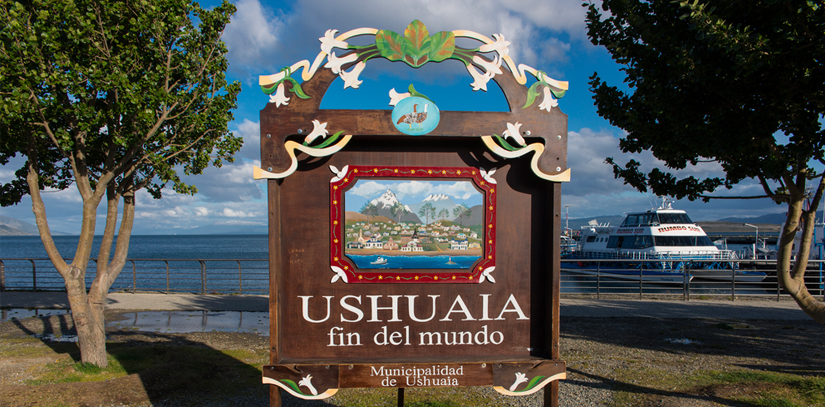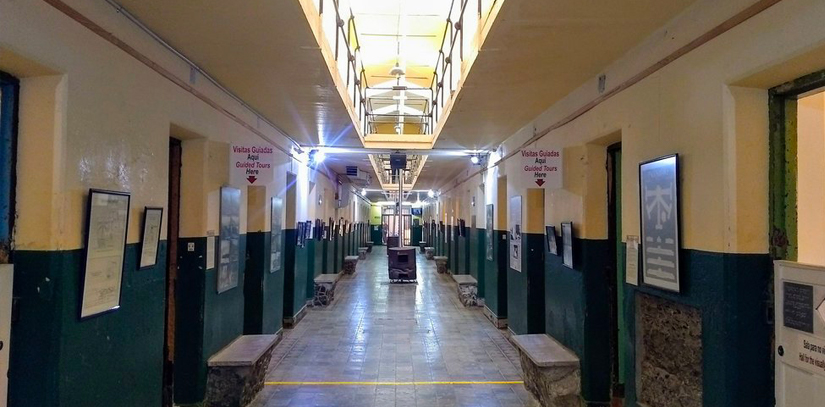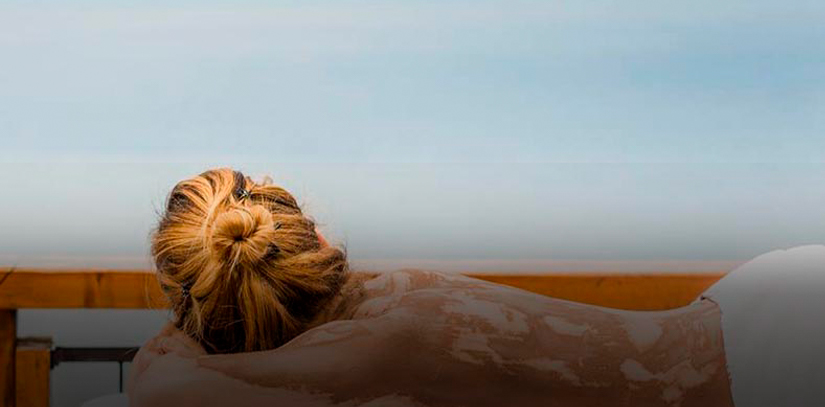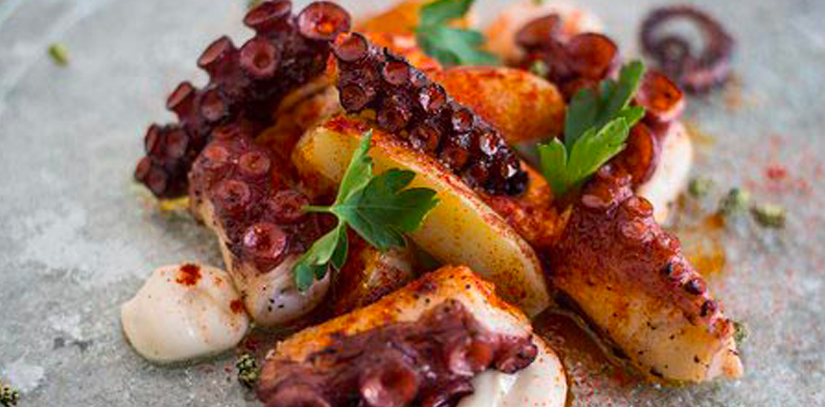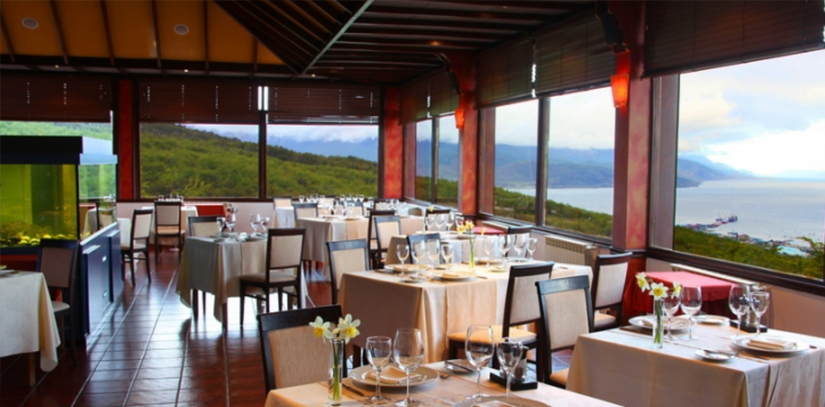Most people who travel to Ushuaia are en-route to a Patagonian adventure in the Tierra del Fuego National Park. There is an abundance of sights in the region that are visually stupendous: snow covered glaciers; colonies of busy penguins; lush green forests of indigenous trees; and fantastic landscapes combining a spectrum of colors.
The Martial Glacier is a good place to start; this ice covered mountain 4.5 km away from Ushuaia provides drinking water to the city and is the base for a great number of sports and activities. From the Martial Glacier Resort, travelers can set off on various adventures with some remarkable trekking options through an intense natural environment. From the Resort a chair lift will take you up the side of the glacier giving fantastic views of the city. On arrival at the summit there are a number of paths leading to different walks on the glacier. This is also the point from where several good quality winter ski runs begin.
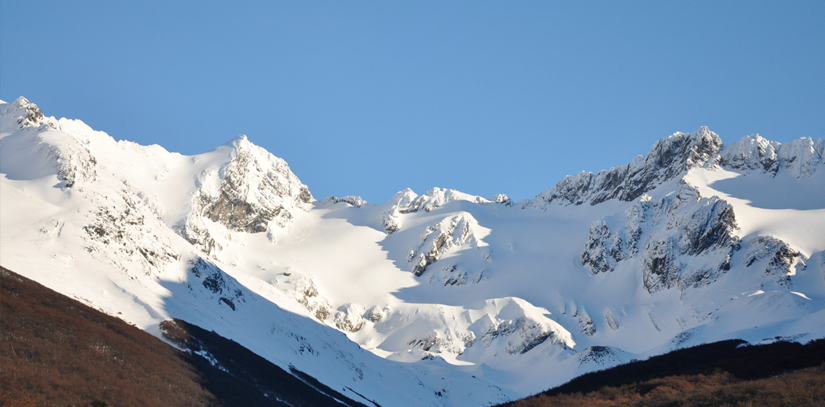
day tour of the Tierra del Fuego National Park is another popular excursion - this National Park is a perfect example of the Andean - Patagonian forest. It was created in 1960 and has a surface of 63.000 hectares. In this area the final part of the Andes features a northwest - southeast orientation. The peaks alternate with valleys where there are rivers and glacial originated lakes. Two types of forests are dominant here: those of Lenga and Guindo trees, both with an open under-wood mainly consisting of moss and fern. In the spaces between the forests there is plenty of peat in the very humid and flooded areas where the sphagnum moss grows. On the seashore, the two great bays (Lapataia and Ensenada) are covered in gorges and beaches that are full of white cauquenes. There are also black-eye browed albatross (over two meters long) that cohabit with the steam duck and the diving petrel. There is also a rare kind of otter named chungungo. Other species are the guanaco and a particular Tierra del Fuego variety of red fox. The Canadian beaver, an introduced species, has caused a great environmental impact because it cuts down trees in order to build dams, which, in turn, provoke floods in certain parts of the forest where the trees also die as a consequence of the excess of water.
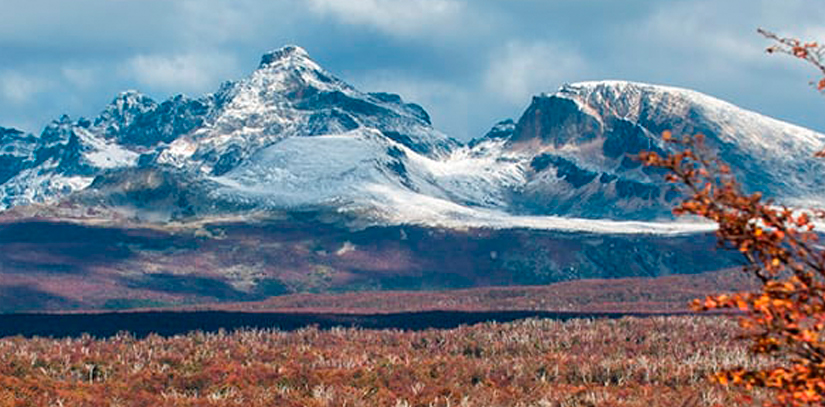
Boating expeditions along the Beagle Channel are always a spectacular experience, particularly in autumn when the myriad tree types are yet to shed their leaves. Amongst other sights, colonies of sea lions and birds can be admired against the picturesque glacial backdrops and the eerie yet fascinating Les Eclaireurs Lighthouse near the wreck of the German boat "Monte Cervantes", sunk in 1930. More extensive trips reach Lapataia Bay (inside the Tierra del Fuego National Park), or to "Estancia Harberton". These make several stops so that expeditions can be made inland on foot, horseback or by 4x4 to further explore the rugged Patagonian terrain. Vessels include modern sailboats and catamarans or classic ships. The tip of Cape Horn is also accessible through these most southern of waters, not to mention the frozen wilderness of Antarctica.
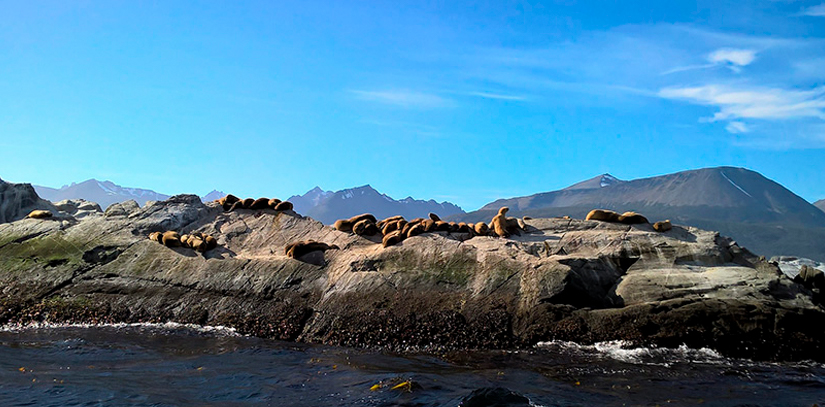
With such a fantastic landscape to explore, various outdoor activity options are also on offer, with trekking, horse-riding, sport-fishing, mountain-biking, mountaineering, skiing and sailing along the Beagle Channel to Cape Horn and the Antarctic Continent amongst the many adventure sports on offer.
One of the best skiing resorts in the area is Cerro Castor. Fans of the resort say that it offers one of the longest seasons, with skiing from June until October without much variation in the quantity and quality of the snow. In addition, with its bases practically at sea level, skiing can be done with the most oxygen possible - which decreases the risk of cardio-breathing problems. Located 20 km from Ushuaia, the most southerly ski center in the world is covered with thick birch forest. This is gratifying to the skiing experience: coming out of a wall of high gray trunks, their tops heavy with snow, the sea appears.
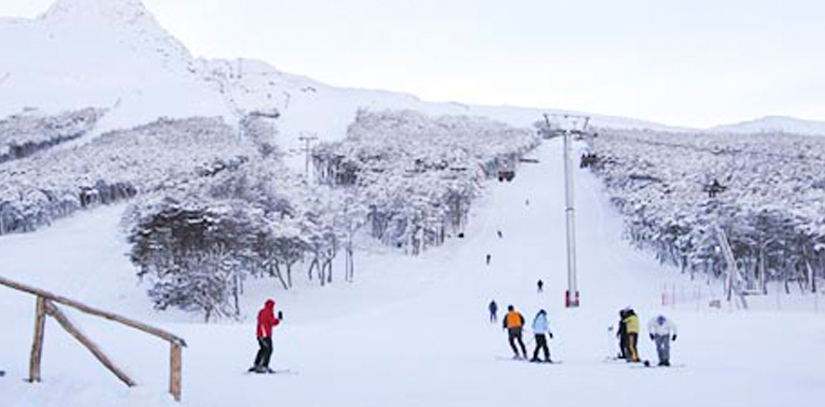
Another activity that is becoming increasingly popular amongst visitors to the area is bird watching. Various tours depart from where almost all of the species of southern Patagonian birds can be admired. There are tours centered close to Ushuaia such as on the Martial Glacier and along the Beagle Channel. One of the best circuits requires a venture to the nearby town of Rio Grande which has access to one of the most interesting observation points in the area.

